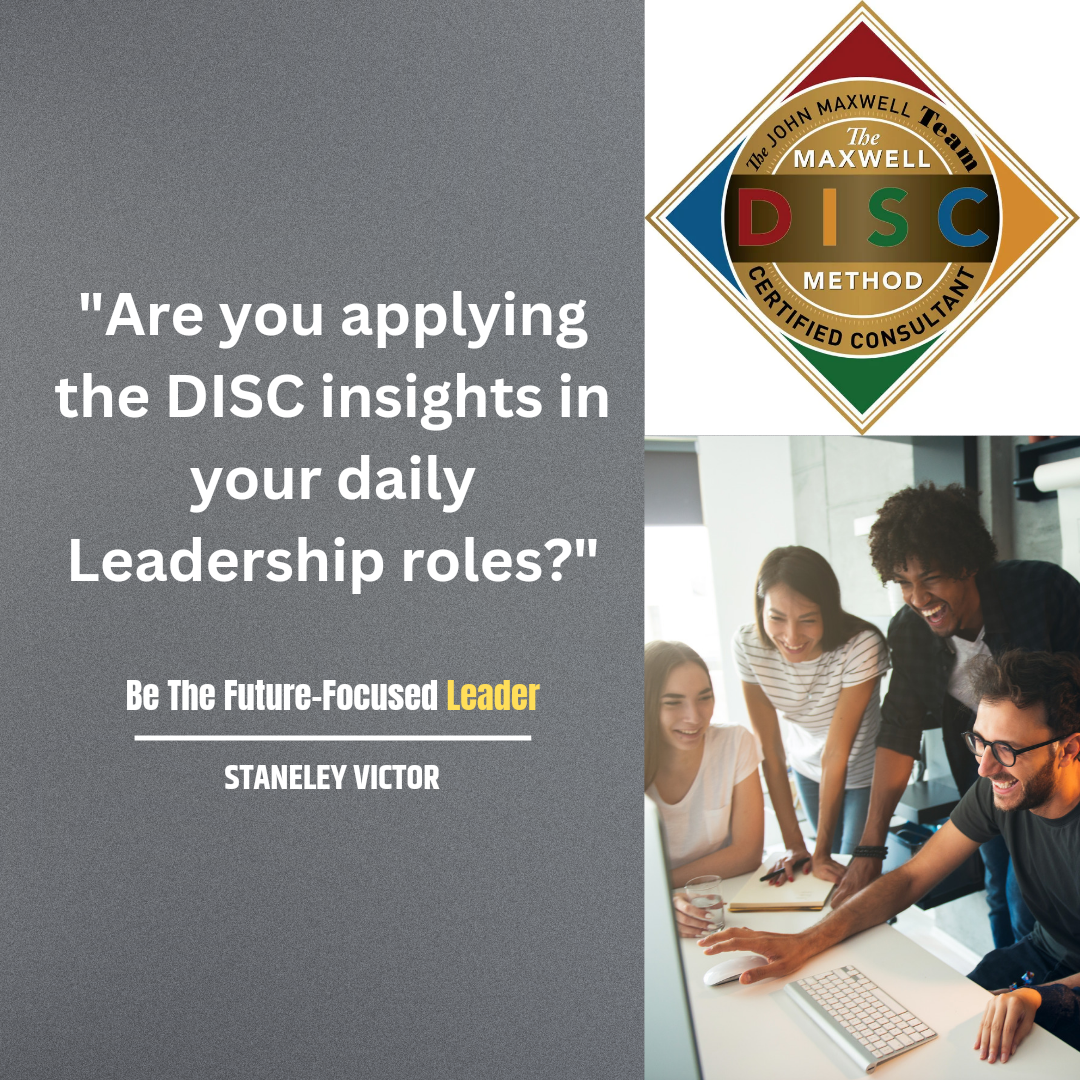“Navigate Change, Inspire Teams, and Build a Sustainable Legacy”

As a leader whether you are leading a team of 5 or or a massive group of 5000, the daily challenges you face as a leader are countless. The DISC assessment, which evaluates Dominance, Influence, Steadiness, and Conscientiousness of yourself and your team, can offer a plethora of insights for leaders. Integrating these insights into your everyday leadership responsibilities can revolutionise the way leaders interact, make decisions, and foster team dynamics.
Here’s how:
- Personal Development and Self-awareness:
– Leaders can recognize their dominant traits, acknowledging their strengths and areas of improvement.
– This self-awareness can guide them in refining their leadership style, ensuring they lead more effectively and authentically.
- Tailored Communication:
– Leaders can adapt their communication style to resonate with different team members based on their DISC profiles.
– For instance, a leader might use direct, concise communication with a high “D” individual, while adopting a more relational, enthusiastic approach with a high “I” individual.
- Conflict Management:
– By understanding the behavioral tendencies associated with each DISC type, leaders can anticipate potential areas of friction and navigate conflicts more effectively.
– They can mediate conflicts by understanding the underlying motivations and fears of the conflicting parties.
- Delegation and Task Assignment:
– DISC insights can guide leaders in assigning tasks that align with individual team members’ natural strengths and inclinations.
– For instance, a person with a high “C” might excel in tasks requiring precision and detail, while someone with high “I” might be better suited for client interactions or brainstorming sessions.
- Motivating the Team:
– Different DISC profiles are driven by different motivations. Leaders can use these insights to tailor their encouragement, feedback, and rewards to best resonate with each team member.
– Recognizing and addressing individual needs ensures team members remain engaged and motivated.
- Building Cohesive Teams:
– By understanding the DISC profiles of team members, leaders can structure teams that have a complementary mix of skills and personalities.
– This ensures a balance of visionary thinkers, decision-makers, implementers, and supporters.
- Training and Professional Development:
– Leaders can design training programs that cater to the diverse learning and interaction styles within their teams.
– This ensures that training is effective, engaging, and relevant for all team members.
- Decision Making:
– Understanding their own DISC profile can help leaders recognize their biases and tendencies in decision-making.
– For example, a leader with high “D” might have a propensity to make decisions quickly, so they might benefit from consulting with team members who have a more analytical (high “C”) perspective.
- Enhancing Organizational Culture:
– By promoting an understanding of DISC throughout the organization, leaders can foster a culture of mutual respect, empathy, and open communication.
– This environment encourages team members to appreciate diverse perspectives, leading to a more inclusive and harmonious workplace.
In essence, the insights gained from the DISC assessment can be transformative for leaders. By integrating these insights into daily roles and responsibilities, leaders can navigate interpersonal dynamics more effectively, foster team cohesion, and ultimately drive their teams and organizations towards greater success.
So,
Are you an HR or Learning & Development Head, CEO, Team Leader?
Are you looking for Leadership Development, Team Bonding, DISC Assessment & Workshop or Personal Growth Trainings?
Connect with us Now!!!
Staneley Consulting & Training
www.staneley.com
WhatsApp: 8879381993 / 8806411993/9766465193
Email: staneleyconsulting@gmail.com
